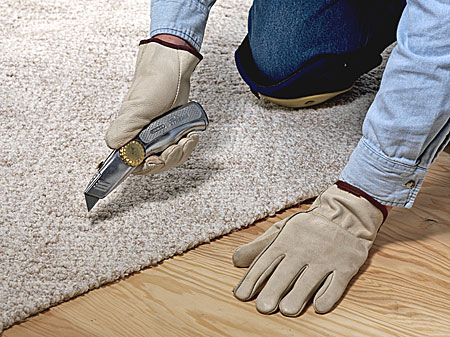Box Cutters (Download)
Box Cutters 1 Box Cutters are hand-held tools with a short sharp blade that generally can be retracted. Typical box cutter with protective housing and retractable blade. Definition 2 Common Box Cutter Styles Typical box cutter with full housing Folding style pocket box blade Inexpensive fixed blade with metal sheath “ Snap-Off ” box cutter with adjustable blade length 3 Common Construction Usage Sharpening carpenter ’ s pencil Cutting carpet Opening boxes Scoring drywall Removing sheathing from wire Cutting shrink wrap Cutting shingles Cutting insulation Removing shipping straps from pallets Many utility applications (some without regard for the tool ’ s intended purpose) 4 Typical Hazards Punctures Lacerations (Cuts) 5 Recent Accident History Construction laborer personnel incurred 26,960 days-away-from-work from box cutter injuries in 2009. 43% of these were contact with object or equipment, of which, 29% were cuts and lacerations. That i s 3,362 cuts and lacerations in 2009 Source: Bureau of Labor Statistics 2009, http://www.bls.gov/iif/#tables 6 Recent Accident History Personnel engaged in materials handling in the construction industry incurred 135,350 nonfatal accidents in 2007 15.1% of these injuries resulted from cuts and punctures 15,560 reported cuts and lacerations 4,820 reported punctures Source: Bureau of Labor Statistics 2007, http://stats.bls.gov/iif/oshwc/osh/case/osnr0031.pdf 7 Accident Data (not specific to construction) 2 nd most frequent cause of days away from work Source: U.S Bureau of Labor Statistics, http://www.bls.gov/iif/oshbulletin2006.htm 8 Source: Bureau of Labor Statistics 2007, http://stats.bls.gov/iif/oshwc/osh/case/osnr0031.pdf Accident Data ( not specific to construction) 9 Understanding These Trends Lacerations and punctures are severe injuries when they happen, but usually heal relatively quickly and do not have lasting debilitating effects on the injured. 10 Fatalities Fatalities are not commonly associated with the use of box cutters OSHA ’ s fatality investigation data from 1990 -2009 did not reveal any fatalities specifically attributed to box cutters Source: Extracted from OSHA Accident Investigation Data 1990-2009 11 OSHA Regulations No OSHA regulations specifically mention box cutters, however other regulations do exist that would merit compliance. One example of an applicable regulation is: 1926.301(a) Employers shall not issue or permit the use of unsafe hand tools. 12 Applicable PPE Gloves Use cut resistant gloves for laceration protection Protection from snapped banding on boxes and crates Protection from falling debris, especially when cutting overhead 13 Safety Glasses Prevents broken b lade f rom e ntering e ye Protects from s napped b anding o n b oxes a nd c rates Protects from f alling d ebris, especially when c utting o verhead Applicable PPE 14 Best Practices Select quality box cutter with safety features Train workers in proper usage and handling of tools prior to use Self-Retracting Blade: Retracts when blade loses contact with cutting surface regardless of safety lock position Automatic Blade Cover: Covers blade when blade loses contact with cutting surface. Variable blade depth controlled by blade cover 15 Best Practices Use Right Tool For Job- Is The Box Cutter The Right Tool? Use Rust Free and Sharp Blades Only Ensure Blade Is Seated Properly Pull Knife Toward the Body When Cutting, But Ensure Body Is Clear of Blade — Make Several Passes If Needed Retract, Cover, or Sheath Blade After Use Never Leave Box Cutter In Work Area Unattended 16 Think Safety Work Safely 17

